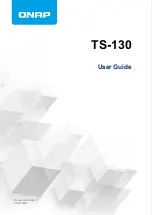
-4-
Adding a Second Drive:
1. Start Windows and allow the operating system to boot to the
desktop.
Note:
Be sure you are logged in as System Administrator.
2. Once Windows has fully booted up, click the
Start
button,
right-click
My Computer
, then click
Manage
.
3. When Computer Management opens, click Disk Management.
4. When Disk Management opens, the Initialize and Convert Disk
Wizard may appear.
Note:
You must use this wizard to write a Signature to the drive.
Otherwise, the drive will not work with Windows. If the wizard
does not appear, you may need to manually complete this
process following the steps below:
a. Right-click on the name of the drive to be initialized. (Drives are
numbered as follows: drive 0 being the boot drive and drive 1-
3 represents all other drives. For CD-ROM drives, the first is
CD 0, the second CD 1, etc.)
b. Choose
Initialize
from the menu that appears.
c. The next screen shows the drive you selected to initialize. Make
sure the drive is checked and click
Next
.
d. You will have the option to convert the drive from basic to
dynamic storage. Leave this unchecked and click
Next
.
e. Click
Finish
For more information about Basic and Dynamic storage, see
Answer ID 282 at
http://support.wdc.com
.
Partitioning/Formatting:
Note:
In two separate windows, on the right side of the screen, a
graphical representation of the partitions on the installed hard drives
is displayed. The top window is for viewing a drive’s status,
capacity, and file system. The bottom window displays a
representation of the drives in the system beginning with the boot
drive (drive 0). In almost all cases, you will want to work with the
bottom window.
1. Once the disk is initialized, right-click in the unallocated space.
2. Click on
Create Partition
from the menu.
3. The Create Partition Wizard appears. Click
Next
to continue.
4. On the next screen select either Primary or Extended Partition
and click
Next
to continue.
5. You may assign a drive letter that is not in use by other devices if
you wish, then click
Next
to continue.
6. Leave the allocation unit size at default and label the drive as
desired. Select
Perform a quick format
and then click
Next
to
continue.
7. Click
Finish
when done.

























